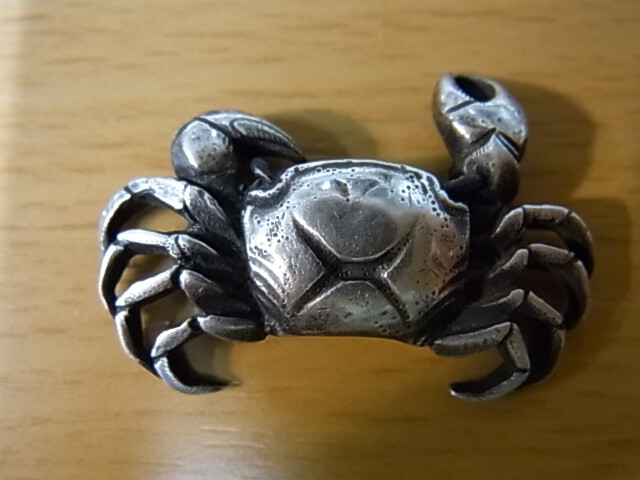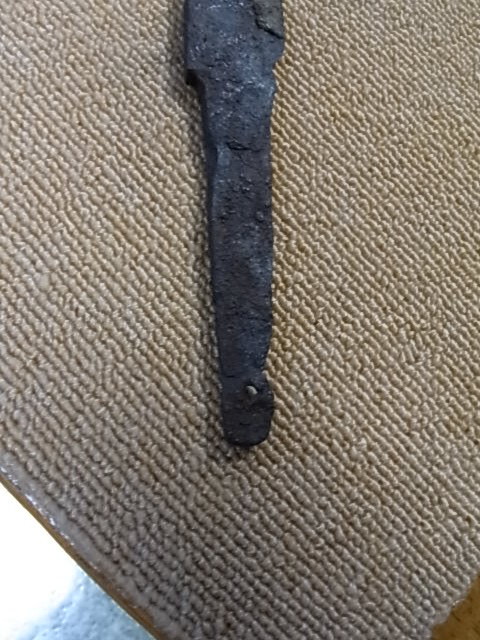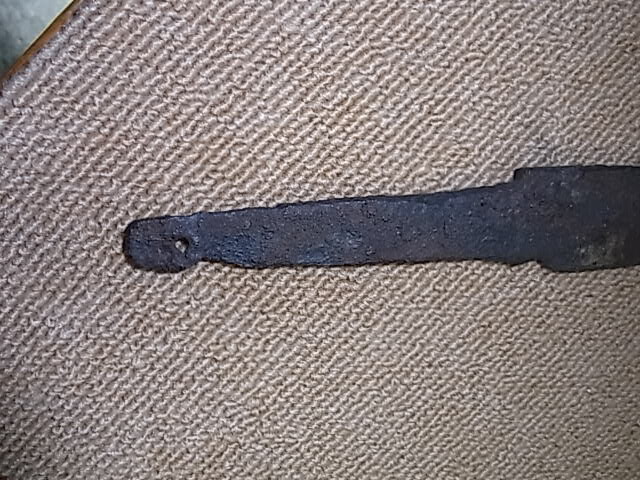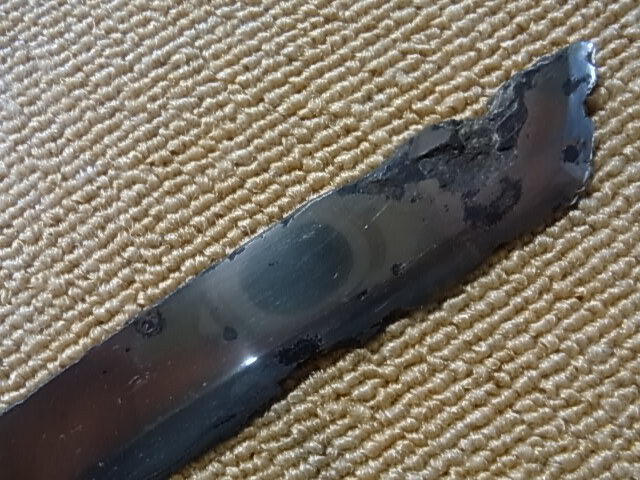-
Posts
14,092 -
Joined
-
Last visited
-
Days Won
261
Content Type
Profiles
Forums
Events
Store
Downloads
Gallery
Everything posted by Bugyotsuji
-
Good luck with that. I've not done it myself yet, but would you not need a notaried translation? Otherwise, from their point of view, how do customs know that the translation is accurate? Forgive me if this has been discussed elsewhere...
-
Koichi san, many thanks. I never fail to learn something from you. So Ian, in L7 include the word 'Preservation' before Society! Completely missed it out! Please adjust according to Koichi san's recommendations.
-
L4: Migi wa to-kyoukai ni oite shinsa no kekka tokubetsu hozon to-ken to L5: kanteishite, kore wo sho suru = The object described on the right is judged a blade worthy of special preservation, and this we certify. L6: Heisei 13, shigatsu itsuka= 5 April 2001 L7: Zaidan Hojin NihonBijutsu To-ken Kyokai = Foundation name. Japan Fine Art Swords Association (If there are any mistakes in the above, I hope someone will step in and correct them. Thank you.)
-
Line one on the right says: Kantei-sho = Evaluation Certificate Line two says: Nagasa ni-shaku ni sun go-bu kyo = Length 2 Shaku, Two Sun & just over 5 Bu Line 3 says: Ichi. Tachi. Mei, Shigenaga (Osafune. Jidai: Nanboku-cho makki Oyobi? itaru? O-ei) = Item. Tachi. Signature Shigenaga (Osafune. Age: End *Namboku Dynasty or? up to? **O-ei) *Nanboku Cho 1336-1392 **O-ei 1394-1428
-
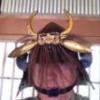
New Kantei Nyusatsu Handbook
Bugyotsuji replied to Clive Sinclaire's topic in General Nihonto Related Discussion
Just arrived back in the UK last night to find it waiting for me. A very handy little thing which I shall be sure to carry from now on. -
Fascinating area , I agree.
-

This Week's Edo Period Corner
Bugyotsuji replied to Bugyotsuji's topic in General Nihonto Related Discussion
Agreed. A fantastic mysterious objet d'art. You don't need to do anything to it! No responsibility, just enjoy! -
Xin Nian Hao!
-
Reading, or translation? Translation would be
-
Looks like
-

This Week's Edo Period Corner
Bugyotsuji replied to Bugyotsuji's topic in General Nihonto Related Discussion
-

This Week's Edo Period Corner
Bugyotsuji replied to Bugyotsuji's topic in General Nihonto Related Discussion
Yes, to Koichi san and Malcolm on the Shakujo. As you can see in Kochi san's excellent link, the Shakujo could double as a weapon. The one in the photo just happens to be sitting on a convenient Zeni-bako. Apologies for the distraction! It looks pretty boring at first glance, but what is interesting about this one is that it is iron and not the usual brass. The lacquered handle is about the length of the Tsuka of a Tanto, and the metalwork is set on a Nakago which is locked into the handle with a wooden Mekugi pin. There are twelve rings. All of the wirework frame, starting from the solid inverted head at the pyramid top, ending in the Nakago, is from one single strand, and had my metalworker friends puzzled as to its construction. The thing I like best is the smooth iron baffle plate. The ringing note is wonderfully pure. It is relatively thin at the mimi edges, but gradually grows thicker towards the central hole, producing this gorgeous sound, and leading me to suspect it might have been made by a Tsuba worker, :lol: more so as it is Kitae-teiru and about the size of a large Wakizashi tsuba. Most people who have seen it agree that it is old, and one respected friend said this evening that he is pretty sure it is mid-Edo at least. Whether it is a weapon or not, and whether it could parry a blow from a blade I do not know, but perhaps it could be used in self-defense, or in practise Tsuba-zeri-ai. The silver crab is probably the Tome-gu decoration from the flap of a tobacco pouch. The two patches underneath are where the clip could have been fixed until someone cut this loose from its original pouch and ground them off. (?) -

This Week's Edo Period Corner
Bugyotsuji replied to Bugyotsuji's topic in General Nihonto Related Discussion
Thanks Piers. If it re-appears, please let me know. Do you want to see it? -

This Week's Edo Period Corner
Bugyotsuji replied to Bugyotsuji's topic in General Nihonto Related Discussion
-
John. The right one is To-hachi Bishamon, 刀八毘沙門 used on Uesugi Kenshin's banners. There's a J Wiki page explaining it. I posted this info on another site in answer to Evalerio. See: http://images.google.co.jp/images?q=%E5 ... CCAQsAQwAw also http://ja.wikipedia.org/wiki/%E5%88%80% ... 0%E5%A4%A9 and: http://ja.wikipedia.org/wiki/%E6%AF%98% ... 0%E5%A4%A9
-
Apologies. To clarify, there are two sources that I use for the Mei on Teppo, neither of which are anywhere close to the plethora of books available for swords. Both are in Japanese. I have mentioned these on this site before, but just to update. The first is Sawada Taira's Nihon no Furuju/Kojuu 日本の古銃 which is perhaps the most reliable modern work on the age periods, regions, schools and Mei of guns, from the beginnings up to the end of the 19th c. Lots of fairly good photographs, mostly black and white. Osaka. 15,000 yen last I heard. The second is Ogasawara and Yasuda's 全国鉄砲鍛冶銘鑑... a set of two books covering all known and recorded Mei on Hinawa-ju. One book lists by region of Japan. The other lists all the Mei in Japanese alphabetical order. No pics, but some maps showing the Teppo Kaji locations. Black and white, Japanese. Out of print, so I have a photocopy of it. Very sought after, but rapidly becoming out of date and the author has been promising for some years to publish an updated version. Printed in 2001, at 3,000 JPY The latter is where I got the information in my post above.
-
In my records here I can find two Mei starting with 江州住 Kunitomo Tanba Daijo. Both continue with the character Tachibana 橘; one finishes with Munetoshi 宗俊 and the other with Yasutoshi 康俊. A good-looking barrel. The marks on the left will be the maker's number and his own cross mark, I guess. The number is sometimes repeated on the panlid and inside the stock.
-

This Week's Edo Period Corner
Bugyotsuji replied to Bugyotsuji's topic in General Nihonto Related Discussion
Piers, is it yours ? Any info on where it has been found and who's the polisher ? Carlo, no it's not mine. I asked where it was found, but felt a slight hesitation in the answer. 'The West' is the closest I could get at the time, and I didn't want to push as it was someone I had met for the first time. I would know how to get in contact again if necessary. I did not ask who the the polisher was. I am pretty sure it will appear in a museum in the not-too-distant future. Doug, 1. the answer is in an earlier post, less than two pages back and begins with an A! 2. Bell, no. 3. Modern art? :lol: (Hint. Start with Onmyoji...) -

This Week's Edo Period Corner
Bugyotsuji replied to Bugyotsuji's topic in General Nihonto Related Discussion
-

This Week's Edo Period Corner
Bugyotsuji replied to Bugyotsuji's topic in General Nihonto Related Discussion
-

This Week's Edo Period Corner
Bugyotsuji replied to Bugyotsuji's topic in General Nihonto Related Discussion
-

Tsuba box - assistance kindly requested
Bugyotsuji replied to Marius's topic in Translation Assistance
I am guessing that geeth must be geese with a lisp! Heianjo is the type of tsuba, right? -

This Week's Edo Period Corner
Bugyotsuji replied to Bugyotsuji's topic in General Nihonto Related Discussion
Stunning, Carlo. -
Great to hear. Many thanks.
-
Apologies for the word. It certainly sounds strange in English. Ohmi yari are highly collectible in their own right. Within the Japanese context, though, beautiful objects often had this 'novelty' aspect. Some intriguing aspect. An unusual juxtaposition of known conventional objects could always be a talking point. Delight the eye. One of the reasons Koshirae could be dismantled and reassembled in different form for any occasion, with that day's choice of Tsuba for example. What armor/armour shall I wear today? For those who had everything, Aki (boredom) was a constant enemy. Invention within convention? :lol:






